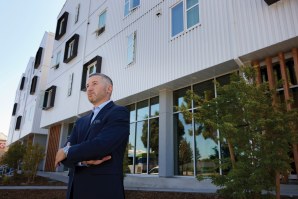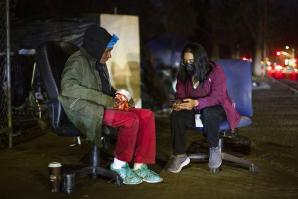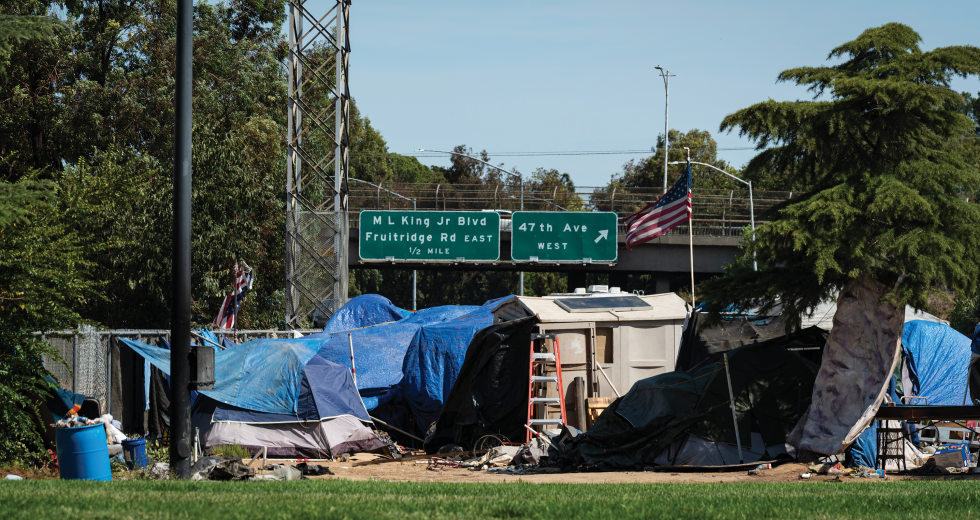It would be difficult for anyone who saw this year’s “point in time count” of homeless people in Sacramento County not to be outraged. The count records the number of individuals sleeping in homeless shelters or living unsheltered who can be counted on a single given night. It does not include people sleeping in cars, “couch surfing,” or others who simply cannot be found that night. The count this year was just under 10,000, which was more than double the count in 2019. The actual number of homeless is substantially higher than the point in time count. The question is: How did we get here?
We had, by comparison to today, a robust “continuum of care” in Sacramento serving the homeless community prior to 2016. It wasn’t perfect, but it was a far more effective system of care. We were, until a few years ago, moving large numbers of people out of homelessness permanently. I can also add with complete confidence that prior to 2016, there was far less money being spent on those services and the related impacts of homelessness in our community. What changed? The decline started with federal policy changes that altered the shape of homeless services and our local “continuum of care.”
Major sources of funding for homeless issues in our community come from the federal government. The Veterans Administration funds veteran-related homeless services and the Department of Housing and Urban development has historically funded a variety of programs for the non-veteran homeless population. Over the years, HUD allocated a large portion of those funds to pay for homeless services in addition to funding affordable housing solutions.
A few years ago, HUD announced it would no longer be funding homeless programs that did not include new housing units. This signaled the shift to a new model of homeless service delivery called “housing first.” It originated from a series of independent studies that were done in the ‘90s. These studies compared the outcomes of homeless men with mental health issues, who were placed in permanent housing to start their service coordination, against programs that institutionalized clients. The studies concluded that individuals who were placed in the housing first model produced better outcomes over a one- to two-year period than those treated at institutions.
These studies influenced the decision by HUD to stop funding homeless transitional housing programs across the United States. Locally, this shift to housing first and the elimination of transitional housing have contributed to the rapid growth of our homeless population. There are related policy issues that impacted the homeless population growth that are embedded in these treatment shifts. Predictably, driven by these funding changes, our continuum of care in Sacramento committed fully to the housing-first model and the move away from transitional housing.
The housing-first model is supposed to serve the most vulnerable among the homeless (those who had been chronically homeless the longest). They receive financial assistance for deposits and rent subsidies, which remain in place for as long as it is needed, along with intensive, comprehensive wrap-around services. Based on the studies, those services are to include case managers (for life skills training and barrier reduction) and mental health workers, together with housing and employment specialists. The studies also emphasized the importance of intensive services being available every day for the first 90 days with regular evaluations before being reduced.
The move to housing first in our community was massive and immediate. Unfortunately, due to funding restrictions and trained staff shortages here, these vulnerable clients were only given three to six months of rent subsidies and “light touch” case management. There was the additional problem of logistics as these clients were spread all over the community. The ensuing high failure rate was not surprising.
After the rush to housing first came the elimination of homeless transitional housing from our community. The target in this case was Mather Community Campus, a highly successful homeless services program that operated from 1998 to 2018. The program won two national presidential awards for excellence in homeless services between 2002 and 2009. It was conceived by forward-thinking staff working at the Sacramento County Department of Human Assistance from 1995-1997.
Mather, a former Air Force base, was decommissioned in the ‘90s and offered a perfect location and facilities for this use. At capacity, Mather served 183 single adults and 60 families with more than 120 children — over 400 people in total. It was a comprehensive program designed to move people out of homelessness to permanent housing through employment training and placement.
Mather provided all the services needed on-site for rehabilitation and the reduction of barriers to employment and housing. Vocational training and employment placement were included. Thousands of people left homelessness for good with housing and employment over the 20 years of operation. Our community received a return on their investment with the creation of new tax-paying citizens and consumers in the community. Successful graduates often ended generational poverty in their families — potentially reducing future homelessness.
But by 2018 all HUD funding had been eliminated and the program ceased to exist. In 2016, due to HUD rule changes, the waiting list to enter Mather, which included over 250 people, was terminated. Those 250 people lost their chance to leave homelessness behind, along with hundreds more in the future.
The clients who entered Mather between 1998 and 2016 came as referrals from shelters, probation or other homeless programs that included alcohol and drug recovery. The only requirements to enter Mather were 90 days of sobriety and the desire to go back to work. The recidivism rate, as measured by an independent study, was less than 5 percent year over year. The number of people who exited homelessness was well over 3,000 over 18 years. When the Mather transitional housing program was reduced to shelter space, there was nothing left in our community that offered a clear and defined path out of homelessness. The closure left a hole in our chain of homeless services, one that still has not been filled.
The massive move to housing first and the elimination of transitional housing began in 2016 in earnest in Sacramento. There were other contributing factors to our recent unprecedented growth in the homeless populations that there isn’t room here to fully discuss, including the federal decision to allow clients to use addictive drugs in any of the programs they fund.
We need to start by identifying the issues with solutions that will positively impact this crisis. Those in charge of directing the solutions to homelessness have, in my opinion, been treating the wrong problem. For the past six years all the efforts have been on relocating the population. It is easy to understand that motivation for business owners and local citizens who want this problem off the street and out of their neighborhood. But putting people into housing who have no training on how to manage a household and no income to support themself is not a recipe for success. When you understand that 90 percent of these clients are dealing with mental health, drug addiction or both, the prospect for success becomes minimal. Now, after six years of housing first, the homeless population continues to grow in Sacramento.
There are significant lessons to be learned from the Mather experience. First, a system that focuses on rehabilitation, relearning and employment training can be very effective in moving people out of homelessness permanently. The fact that there was a perpetual waiting list of more than 200 people for the Mather program consistently from 2010 through 2018 confirms the need in our homeless care system. Second, having access to the population in one location creates huge efficiencies for positive outcomes with reasonable costs.
Our objective should remain to be moving homeless people off the street into suitable housing. Housing first can be a part of the solution provided if we can match the service needs of that population. We also need transitional housing: It provides a controlled environment to temporarily house, rehabilitate and equip people to live independently who need more time. We should work to continually reestablish significant parts of the homeless population as contributing members of our communities. We also need to address the problems of drug addiction as it continues to compound our problems with mental health and homelessness.
If we expect better results, we need to expand our system of homeless services. When seeking locations to serve the homeless, officials always run into “not in my neighborhood” resistance. Can we get over this stigma? The way things are progressing, the homeless problem will soon be in every neighborhood, except people won’t be getting treatment in controlled programs. They will be sleeping in fields and local commercial storefronts. They will be forced to panhandle or commit crimes to obtain their essentials and they will move further away from becoming part of our community. This is a recipe for social unrest and chaos, and it is inhumane.
If you are looking for significantly more detail on these issues, I published a book in November 2021 titled “Hope Disappearing, A Population Left Behind” that is available through traditional outlets.
Sherman Haggerty served on the Volunteers of America board of directors for almost a decade before becoming the director of Mather Community Campus in Sacramento. In 2019, he became an ordained minister with VOA. He has a master’s degree in management from the Drucker School of Management at Claremont College and spent 30 years as a home building executive.
–
Stay up to date on business trends in the Capital Region and beyond: Subscribe to the Comstock’s newsletter today.
Recommended For You

More Affordable Housing Can Happen
Lessons from six cities on getting it built
A few cities around the region have affordable housing projects underway that showcase how they’re getting it done, and their success may hold lessons for other jurisdictions.

California Homeless Population Grew by 22,000 Over Pandemic
The latest point-in-time count of California’s homeless population shows that it increased at roughly the same pace as previous years, although it appears to have disproportionately affected Latinos. Experts say homelessness interventions are paying off but “the inflow is killing us.”
Sponsored

Action Through Architecture for Homeless Housing
Maria Ogrydziak Architecture
With a creative vision, architect Maria Ogrydziak has lent
her skill and talent to Paul’s Place, an innovative project
tackling one of today’s biggest humanitarian crises —
homelessness. “I knew that architecture could help make great
strides toward a solution to homelessness in the city of Davis,”
she says. 

We Must Think Locally to End Homelessness
Homelessness is a societal tragedy, and in that sense it is like a fire, earthquake or flood. But it’s different, too. It’s a crisis that unfolds in slow motion.

Cooking to Catharsis
Capital Region nonprofits empower women through culinary career training
Several local nonprofits are leading women to
self-sufficiency through a holistic approach, with culinary
training programs that arm them with transferable skills.




